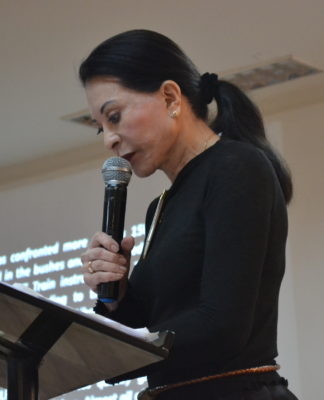A little knowledge is a dangerous thing.
If you do not know much about history, the arts, the Holy Bible, and the Church, then The Da Vinci Code is not for you.
The Da Vinci Code, Dan Brown’s best-selling novel on Leonardo da Vinci’s alleged secret society, the Priory of Sion, tells of alleged Church conspiracies against the pagan worship of the “sacred feminine,” and the “truth” that Jesus married Magdalene, left a Merovingian bloodline, and to these accordingly, grail keepers like da Vinci subtly bore witness in their works. The controversial novel is now translated into 30 languages, with over six million copies sold. It will soon be turned into a movie.
The story could have been perfect fictional reading if not for its opening page titled “Fact,” in which it claims that “all descriptions of artwork, architecture, documents, and secret rituals in the novel are accurate,” with many book reviews backing the claim.
Yet a lot of critics find the book anything but accurate, and aggrieved parties in the novel, like the Opus Dei Prelature in the United States, have cried foul.
“The novel is a product of imagination which, like the movie Stigmata and many other novels before about the Jesus–Magdalene affair, were based from the Nag Hammadi Gnostic gospels written more than a century after Christ, and therefore cannot be as credible as the early biblical Gospels,” says Fr. Regino Cortes, O.P., UST College of Fine Arts and Design regent and biblical scholar of the Pontifical Biblical Commission in Rome and the Ecole Biblique et Archeologique Francaise in Jerusalem.
The book raises many issues and anyone who wishes to enjoy the novel with fair insight on art and religious studies could only be encouraged to hear the other side of the story.
Copycat Christ?
“Nothing in Christianity is original,” the novel says, claiming that Jesus’ death, resurrection, and divine titles were derived from the pre-Christian god Mithras, and many other Christian imagery and holy days “stolen from the pagans.” Moreover, it depicts that Christ as God was a Constantinian rework.
Glenn Miller, editor in chief of the Christian Research Journal, wrote in Was Jesus Christ a Copycat Savior Myth?, that there are two Mithrases, the Persian Mithras that predated Jesus, and the Roman Mithras that evolved after the close of the New Testament and adopted Christian motifs. The novel, like many others, confused the two to work out the theory that Christianity was the copycat. The titles “Son of God” and “Light of the World,” for instance, were already used in the Old Testament prophecies on Christ. The Council of Nicaea at the time of Constantine did not divinize Jesus but only affirmed a teaching against the Arian heresy.
As with the apparent similarities between Christianity and pagan systems, Miller explains such beliefs are generic to any religion, and do not require a borrowing/dependence theory, or must have been assimilated by the millions of pagans who converted to Christianity.
There are accounts on Jesus written by non-Christians that confirm the stories on his life as historical facts, deferring the novel’s claim that the Christian faith, like any other, is “based on fabrication.” Jesus as “doer of wonderful works,” who “appeared alive again on the third day,” emerges in all versions of the Antiquities of the Jews by Jewish Pharisee and imperial historian Josephus Flavius (AD 37-100).
Further in the novel, the Bible is said to have “evolved through countless translations, additions, and revisions,” though the novel itself mentions the discovered Dead Sea Scrolls, which along with the disputed accounts on Jesus, contained the oldest manuscripts of the Old Testament (3rd-2nd century BC), a point Brown must have missed. The old texts were found similar to the present Bible, therefore disproving that the Bible evolved. The alleged accounts are unfounded, since the Scrolls did not name Jesus at all, and double 1991 carbon dating indicated that they were written before Christ.
The novel then spells suspicion why only four gospels were included in the New Testament canon, when there were more than 80, and says that it was crafted by the pagan Roman emperor Constantine.
Carl Olson in the Envoy Magazine says in reply that anyone familiar with 2nd century writings would know that consensus in the New Testament canon occurred well before Constantine. The Church, canon historians say, included only the four gospels—Matthew, Mark, Luke, and John—because the rest did not fit with the eyewitness period (when witnesses to Jesus’ ministry were still alive to verify accounts), or were of anonymous writing.
Bogus testimonies
Contrary to the story, columnist Amy Welborn in the Facts about the Fiction, says that the documents in the Paris Bibliotheque Nationale, which supports the actual existence of the Priory of Sion—and where the whole novel hinges—were a forgery. Welborn says that the document was placed in the archives by the anti-Semite Piere Plantard, a self-proclaimed Merovingian claiming right to the French throne.
Similarly, medievalist and journalist Sandra Miesel in Dismantling the Da Vinci Code says goddesses did not dominate the pre-Christian world as presented in the novel, not even in Semitic lands where the hieros gamos (orgiastic rite in the novel) was an ancient practice. She said that the ancient Olympic games were celebrated in honor of Zeus Olympias, not Venus.
Disagreeing with Brown that “YHWH” was derived from Jehovah, the union of the masculine “Jah” and the feminine “Hevah,” Miesel said that “Jehovah” is rather a 16th century rendering of Yahweh using the vowels of Adonai (‘Lord’). She dismisses the claim that Judaism once adored a feminine counterpart of Yahweh through the presence of sacred prostitutes, which refers to Solomon’s corruption of the Temple with other religions.
Miesel also counters the accusation that five million women were burned in the Church’s witch-hunt. She said that latest figures show that between 30,000 to 50,000 were persecuted, not all were women, not all were burned, and not all by the Church.
Challenging the charge that the Church conceived the horned devil imagery to “demonize” Baphomet, the goat-like pagan god of sex, Nigel Cawthorne’s The World’s Greatest Cults tells that the depiction of Satan as a goat-like figure with horns and tail is rather common among world religions. The Mexican god of hell, Mintactecauli, and the ancient Egyptian gods Apepi and Tiawath, are among a few examples.
Meanwhile, Duquesne University art historian Elizabeth Liev in Debunking the Da Vinci Code, rebuts Brown that the one seated in Jesus’ right in da Vinci’s Last Supper is the supposed wife, Magdalene, not John, as the figure is said to have been painted to portray a woman.
“Common to many Renaissance paintings is that of a favored follower, a protégé or a disciple like John the Beloved, who is always portrayed as very youthful, long-haired, and clean-shaven,” she said.
Against the novel’s charge that there are cups but no chalice in the painting, and that da Vinci was supposedly hinting that the real holy grail (chalice) was not a vessel but Magdalene carrying Jesus’ bloodline, critics argue that The Last Supper actually portrays Jesus’ right hand turned down over his cup evoking a traditional gesture of the Roman Mass, which could only mean that the wine-glass cup in use is the chalice being portrayed. The alleged “disembodied” hand with a knife in the painting is Peter’s, who, while pointing to John (or presumably Magdalene), is not really suggestive of a threat to Magdalene, but an allusion to his defense of Christ in the Gethsemane Garden.
A love affair?
In the novel, Jesus is said to have entrusted the Church to his “wife,” Magdalene, and that the Bible did not mention Jesus as unmarried at all.
Yet the very name “Peter,” which Jesus gave to Simon, means “rock” (Aramaic: Kepha; Latin: Petros), pointing that Simon is the rock to whom Jesus promised to build his Church. Unfortunately for Brown, the New Testament speaks of the Church as “the bride of Christ,” says Jim Snapp II in The Da Vinci Code-Seriously? Magdalene addressed Jesus after his resurrection as “rabonni,” meaning teacher. Therefore a teacher-and-disciple relationship—not husband-and-wife—existed between them, he said.
Critics further point out that the so-called Church cover-up of Magdalene and women’s role is groundless. Any observant reader would notice that the novel made no mention of Magdalene as among the Church’s most venerated saints, the first witness of the Resurrection, or anything about the Blessed Virgin Mary, as such would destroy the thesis that the Church is against the “sacred feminine.”
Finally, Brown must have neglected reading the final verse of his non-canonical gospel of Thomas. There, Peter says, “let Mary leave us, for women are not worthy of life,” and Jesus responding, “I myself shall lead her in order to maker her male. For every woman who will make herself male will enter the kingdom of heaven.” Certainly, such passage is hardly a conclusion that befits a spouse, or any “sacred feminine.” The novel, an acclaimed masterpiece, only needs to be truthful to its fiction. With reports from www.osvnews.com and www. christian-thinktank.com.














